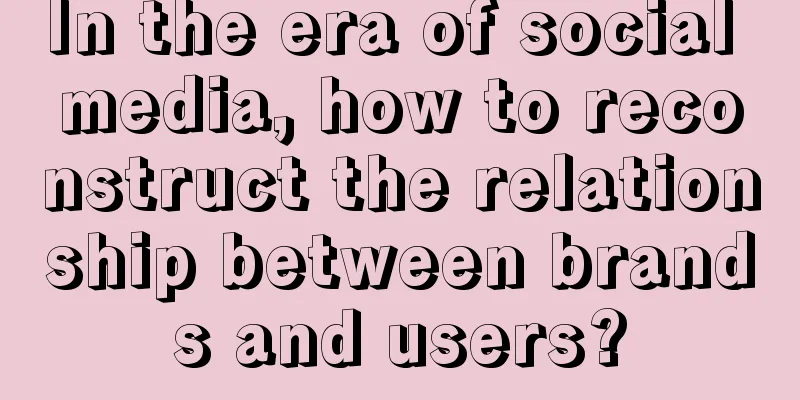Without joint ventures, they cannot squeeze into the consumer market.

Mixue Ice City collaborated with China Post, and the reading volume of related topics on social media reached 40 million+; Luckin Coffee and Moutai jointly launched a sauce-flavored latte, which sold 100 million yuan in one day; Nayuki's Tea co-branded with Fantasy, with sales of 1.46 million cups on the first day, setting a new record for the first-day sales of Nayuki's new products; … It is obvious that the trend of co-branding has already blown into the center of the consumer market. Co-branding may not necessarily lead to "explosive popularity", but without co-branding, it is unlikely that one will be able to squeeze into the "mountain" of the consumer market to a large extent. First, Barbie pink marketing swept the world, and then "Moutai+" cross-border marketing became a new trend. Since the beginning of this year, all the large and small brand collaborations have been "exploding in sales" as if they were possessed, among which the new tea beverage track is the most obvious. Statistics show that Nayuki’s Tea has officially announced 20 joint events so far; Heytea has officially announced 19 joint events this year; Luckin’s joint events have reached double digits, and the frequency and sales volume are among the highest among its peers, at least once a month. It is true that IP co-branding has now become a key step in the "commercial war" in the consumer market, and it is also one of the best ways to break the circle and achieve both volume and popularity. However, from Moutai's statement to stop all co-branding activities, it is not difficult to see that the business of co-branding is not something that everyone can replicate. 1. "If you choose a good joint venture, the whole family can have enough food"This brings up a question: what kind of joint ventures have the attribute of "going viral"? What kind of joint ventures can not only make consumers "pay out of their own pockets" but also trigger a social "trend"? Morketing observed the joint venture activities up to September and summarized the "three principles" of brand joint ventures. 1. Lightweight IPs such as emojis are the first choiceFor a long time, the purpose of brand co-branding was largely to expand its own popularity, so when choosing a "partner", they would pay particular attention to "fame". In other words, the more well-known and popular the IP is, the more popular it is. For example, Disney-related co-branding, Harry Potter-related co-branding, etc. Although this type of collaboration has both popularity and audience, for most brands, especially the new brands that have emerged in the past two years, the cost is high and the success rate of the collaboration is low. At the same time, after becoming the "first choice", IP collaborations will also become homogenized to a certain extent, causing aesthetic fatigue among consumers. In the current social context, emoticons have become one of the main ways for Generation Z to express their emotions, and are also their personality and "social currency" on the Internet. For example, Loopy, which is quite popular on social media now, was originally an animated character from the Korean national cartoon "Pororo the Little Penguin". Later, with the creation and spread of emoticons by many netizens, Loopy successfully became popular. At present, the Douyin topic #Loopy has been played more than 450 million times; the Loopy joint series first launched by Lelecha achieved sales of 65,000 cups on the day it was launched; the Loopy series dolls released by MINISO were sold out on the same day... The reason is that, on the one hand, emojis can arouse consumers' emotional resonance and promote purchase conversion. On the other hand, compared with relatively mature large-scale IPs, the cost of co-branding emojis is relatively low, and the emotional expression and three-dimensional IP positioning are often more likely to arouse consumers' interest. 2. More cross-border, more out-of-circleThis year, Heytea first collaborated with luxury brand FENDI to launch a co-branded drink for 19 yuan a cup, which made many netizens exclaim, "This is the first time in my life that I am so close to luxury goods!" At the same time, due to the popularity of the co-branding, the mini program had a bug due to a surge in visits. Later, there were cross-border collaborations between Mixue Ice City and China Post, and Luckin Coffee and Kweichow Moutai, which all set off social media explosions. It is not difficult to find that these three have one thing in common, that is, their brand image, industry status and even product pricing are "hugely different". The joint venture often brings a huge sense of contrast and forms a part of natural traffic. For example, the luxury brand FENDI is associated with “19 yuan”, and many people think that this is “lowering its own value” and “I don’t know what FENDI is trying to do”; China Post, as a traditional state-owned enterprise, has a brand image that carries “official authority”, and its collaboration with the “Internet street kid” Snow King has led many people to say that Mixue Bingcheng “successfully passed the exam and got a job”; and the collaboration between Luckin Coffee and Moutai has successfully made the mix-and-match concept of “white wine + coffee” break the circle, and netizens have called it “early C and late A for working people”. From the business logic behind it, it is not difficult to find that cross-border collaboration is essentially a way for both parties to leverage marketing. Behind this "cooperation" is the "resonance" of two different groups, different industries and even people of different age groups. So in terms of the final conversion, it is also the effect of "1+1>2". 3. Emotional value comes first, playing with memes is not as good as going crazyGenerally speaking, the official publicity channels of major brands have always been facing consumers with public images, which has determined that for a long time, its settings have been "groups", "enterprises", "brands", rather than "individuals". In other words, as a medium, it only plays its role in communication, but as a member of the Internet, it has not really put itself in the communication with consumers. Here we can take brands such as Mixue Bingcheng and Lao Xiangji as examples. One thing they have in common is that they know how to establish an online image, are active and "people-friendly", are the official publicity channels of the brand, and are also "good neighbors" who vent their emotional values on the Internet together with a group of netizens. It can be seen that the reason why the joint venture can eventually become popular is essentially the brand's grasp of the emotions of young people today and the connection of resonance. 2. It is a sure win, is co-branding a good business?It is true that if the above three principles can be followed, brand co-branding can indeed achieve a great degree of success, but does this mean that co-branding is a good business that is sure to make money for the brand? We can get the answer from the recent "Moutai +" co-branding craze. After Luckin Coffee and Moutai jointly launched, a social trend of "Dear Luckin" swept the social media, and many brands shouted "Let's cooperate". At the same time, less than a week later, Moutai officially announced that it had jointly launched a chocolate with Dove. There is no doubt that under the premise that the popularity of "Luckin Coffee" has not completely subsided, this cooperation has once again topped the Weibo hot search list. However, although the slogan was loud enough, the actual results were very mediocre. Not only is the chocolate with liquor filling "heard of but not seen", but there are also consumer chaos such as out of stock and selling at a higher price. Not long after, Moutai Chairman Ding Xiongjun announced that he would stop developing "+ Moutai" peripheral products. He said that Moutai must stop at co-branding, which is the only correct choice for Moutai. The emergence of the joint-brand craze is both popular and fading. After the emergence of the "hot product", at the very least, various problems such as "plagiarism", "out of stock", and "price increase" will appear. At the most, the brand's attention is pushed to the forefront in an instant, which puts higher requirements on brand building. If you are not careful, you will fail. Previously, when Morketing interviewed Wang Xiaolu, the brand manager said, "The creation of brand scale is always on the road. Therefore, we need to do some 'opportunistic' things, such as standing with larger brands or IPs, and improving our own brand scale through their support and endorsement. Of course, we can't 'stand in line randomly', we must choose brands that are consistent with our own brand tone and can truly bring endorsement to our brand." Therefore, for most brands, co-branding can only be regarded as one of the ways of brand marketing. Co-branding ≠ high sales ≠ good reputation. Instead of blindly pursuing the selling points of products, it is better to work more on products. After all, all industries are becoming more and more competitive. Without a few outstanding products, it is only a matter of time before they become synonymous with history. Author: Dalei, WeChat public account: Morketing (ID: Morketing) |
>>: The process from artwork to product
Recommend
Brands, seize the dividends of small categories
This article focuses on branding strategies in the...
@基礎佑利 becomes popular, foreigners "staying abroad" dig gold in China's Internet
What kind of impact will there be when foreign &qu...
Exploring the blue ocean of male emotional content in the “his economy”
This article analyzes the reasons why male emotion...
At the end of 2022: My thoughts on brand-effect integration, consumption changes, and minimalist marketing
The new year has come. Looking back at the past ye...
There are three levels of business analysis. Which level are you at?
In business management, business analysis is a key...
Does the company still need a brand director?
As brand thinking becomes more prevalent in all po...
Does Amazon's early payment have any impact? What is the process of opening a store?
Generally, Amazon arranges loan release twice a mo...
What certification is required to sell electric products on Amazon? How do electric products go about logistics?
When doing business on Amazon, the most important ...
How to calculate the income of a novice Amazon seller? What does the seller's income include?
As a new Amazon seller, it is very important to un...
How is Shopee's shipping fee calculated on the Taiwan site? How does Shopee operate?
As a cross-border e-commerce platform, Shopee has ...
8 favorite sentences in January
Unconsciously, we have passed the first month of 2...
Heze South Station was only popular for 10 days, but Guo Youcai has become popular 3 times
Every once in a while, a new "Internet celebr...
Which account is better for receiving payments on Shopee? Where can I check my funds?
As e-commerce is booming, many e-commerce platform...
Amazon takes on Temu and SHEIN
As a global e-commerce giant, Amazon has recently ...
New players, new changes, what will local life be about in 2024?
The local life industry has recently derived new w...









